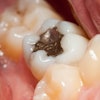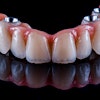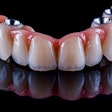Dear DrBicuspid Member,
With annual worldwide rates of oropharyngeal cancers topping 85,000, researchers at the U.S. Centers for Disease Control and Prevention (CDC) investigated the prevalence and types of human papillomavirus (HPV) in these cancers. They found that most patients were HPV-positive and that currently available HPV vaccines could prevent most oropharyngeal cancers in the U.S. Click here to read about their study in Emerging Infectious Diseases.
Although the Patient Protection and Affordable Care Act (ACA) mandates dental coverage for children, ADA researchers found the healthcare reform law has resulted in expanded coverage for another group. Read about their somewhat surprising finding, outlined in the August issue of Medical Care.
A 2009 ADA survey found that nearly 65% of dentists thought that dental technicians and laboratories are regulated in their state. This is not the case. Read this Second Opinion piece by Gary Iocco, president of the National Association of Dental Laboratories, in which he describes ways to ensure safe dental restorations for patients. He reminds dental professionals that poorly made dental restorations -- whether made in the U.S. or abroad -- can lead to a range of health consequences for patients and, in turn, legal consequences for dentists.
While the use of propofol is common in dentistry, researchers are fine-tuning ways to use it more effectively. Read about how Japanese researchers have found that combining it with nitrous oxide leads to better sedation and reduced hypotension.
Many people have felt the jolting sensation of feeling a sharp pain in a tooth after drinking cold beverages. If the pain is caused by pulpitis, the treatment often requires a root canal procedure to remove the damaged pulp. Click here to read about nanotechnology research from the University of Maryland that could provide dentists with a much less invasive treatment for pulpitis.















